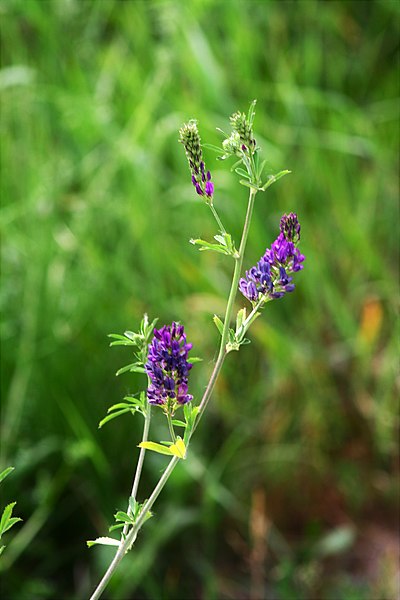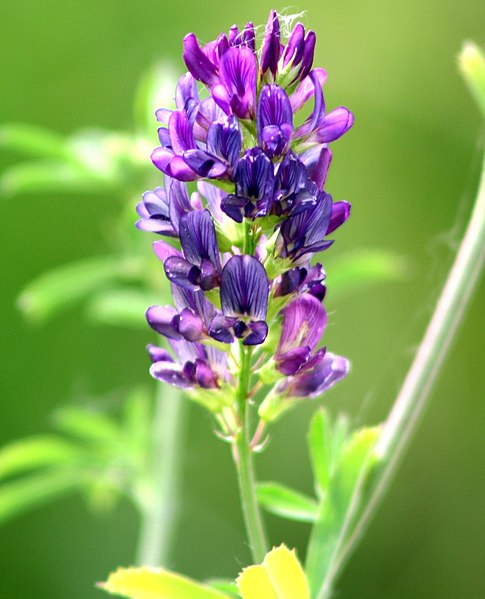Alfalfa Identification – Medicago sativa
Heads up
Alfalfa, scientifically known as Medicago sativa, has been a common plant in many regions for quite some time. If you’ve ever come across a plant with pretty lavender to deep violet flowers that somehow reminded you of peas, then you’ve probably stumbled upon Alfalfa. As a member of the Fabaceae family, also commonly known as the pea family, it shares many similarities with other pea-like plants.
Another name this plant goes by is ‘Purple Medick’. However, despite its charming appearance, Alfalfa is often regarded as ‘weedy’. So, where would you usually find this plant? Mostly, Alfalfa thrives in sunlit areas, including roadsides, waste regions, disturbed sites, and dry fields.
Alfalfa: Key Parts in Photos




How to identify Alfalfa
The flowers of the Alfalfa are quite distinctive. They are organized in a round or short cylindrical pattern, commonly referred to as a ‘raceme’ (a straight, elongated cluster of flowers). Each raceme holds up to 30 flowers on long stalks sprouting from the upper leaf joints. These pea-shaped flowers come in a range of colors from lavender to violet. Occasionally, they could even be yellow or white, mainly depending on the subspecies.
Alfalfa’s leaves are compound, they are made up of smaller leaflets. Specifically, each leaf has three leaflets. Each leaflet can measure up to an inch in length . A noticeable feature on these deep green leaflets is a pattern of light green lines that resemble a chevron symbol. As for the stems, they are erect, branching out in multiple directions, and can be hairless or with sparse hair.
The fruits of this plant are coiled pods, and are about 1/3 inch in diameter. When they ripen, these pods turn brown and house up to 10 brown seeds.
